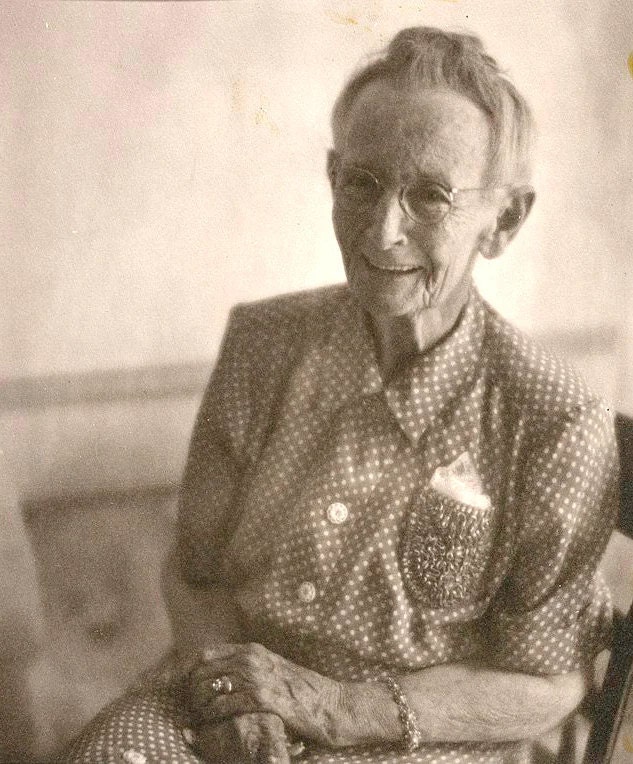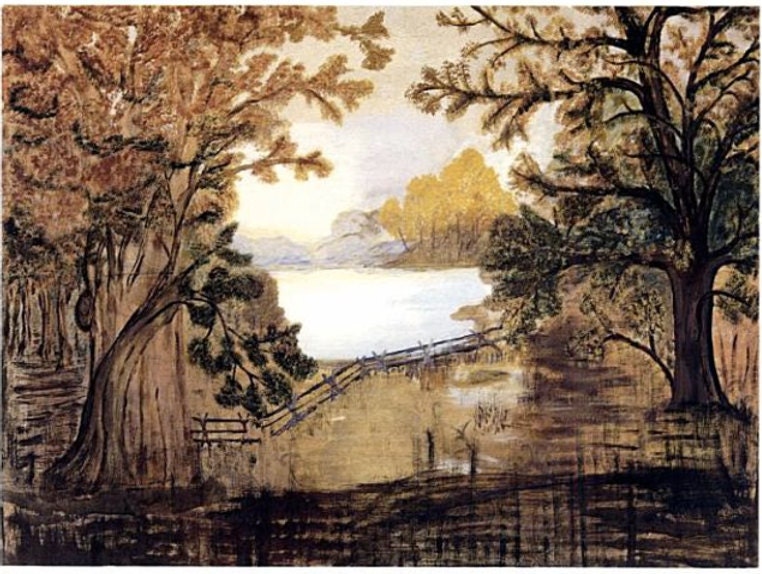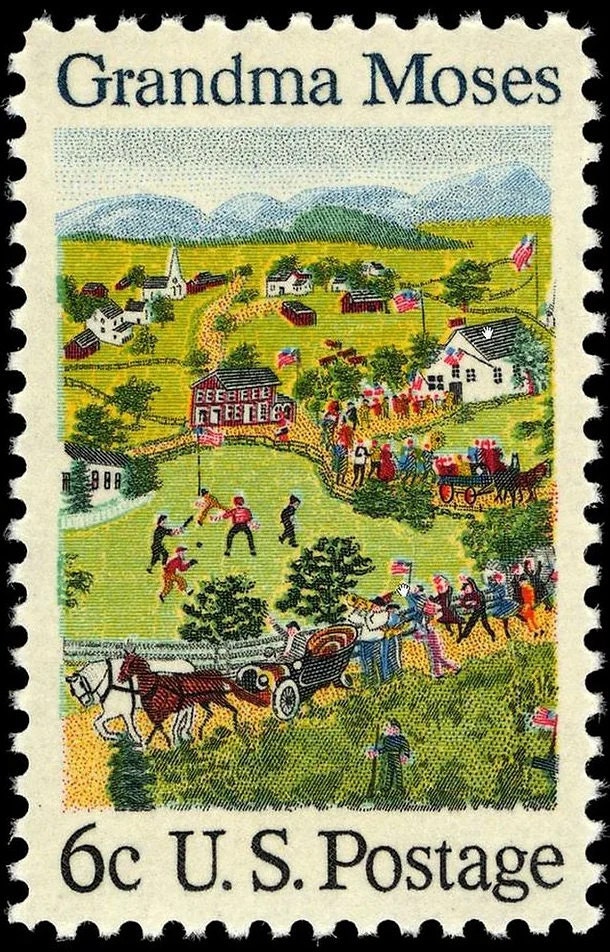
Let's talk about Grandma Moses, or Anna Mary Robertson Moses. Anna had an interest in art as a child and had to sneak times to create. Being a girl in rural America, domestic duties were considered a much better use of her time than drawing or even a basic education, but her father liked to paint and would bring home newsprint for his little girl to use. Anna would draw what she called “lambscapes” and would then paint them using berry juice and whatever else she could find for color.

She married and had ten children, although only five lived beyond infancy. She raised her family, helped with the family farm and spent what little spare time she had embroidering. After her husband died and Anna had grown too old for much farm work, she found herself with idle hands. Arthritis had made embroidery difficult, and friends suggested she return to painting.
Anna created nostalgic scenes of country life despite admitting she was not at all nostalgic for those years. “I’d rather go forward,” she said. She entered paintings in a local exhibit for women in her community, and her artwork was displayed in the window of a local pharmacy. A collector discovered Anna’s unique style in that window and set her on a course toward national renown.

Through interviews with major news sources, Anna became known as Grandma Moses, and she was soon featured in a major New York gallery, an exhibit titled “What A Farm Wife Painted.” Without pretension, she would go on to be featured in 65 exhibits and 50 solo shows. Hallmark purchased the rights to some of her paintings, presidents honored her, and a U. S. stamp was issued in her honor.
Anna was an advocate for creating art in later years, saying it was a great activity for older people and stressing the importance of keeping busy. When asked if she ever hated to part with a painting after selling it, she said plainly—as she always spoke plainly—“Oh, no. I’d rather see the money.”
Anna died at the age of 101, leaving behind paintings still displayed in museums and galleries around the country, including several at the Smithsonian American Art Museum. President Kennedy issued a statement on the occasion of her death, saying. “The directness and vividness of her paintings restored a primitive freshness to our perception of the American scene…All Americans mourn her loss.”
